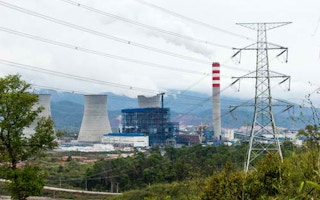Insufficient regulation and fossil fuel subsidies are holding back Southeast Asia’s transition to a low carbon economy, according to a new report released by Eco-Business today.
To continue reading, subscribe to Eco‑Business.
There's something for everyone. We offer a range of subscription plans.
- Access our stories and receive our Insights Weekly newsletter with the free EB Member plan.
- Unlock unlimited access to our content and archive with EB Circle.
- Publish your content with EB Premium.
Government, business and civil society leaders across the region said the absence of tougher regulations around environmental standards was the biggest obstacle to their country adopting low carbon policies and abandoning old models of economic growth.
The report titled Power Trip: Southeast Asia’s journey to a low carbon economy, launched at this year’s Asia Clean Energy Summit in Singapore, outlines the challenges and potential ways forward for six countries in the region, namely Indonesia, Malaysia, Thailand, the Philippines, Singapore and Vietnam.
A number of country-specific barriers to a low carbon economy were identified in the white paper. In the Philippines, long-standing fossil fuel subsidies have discouraged investments into clean energy, while Indonesia-based respondents said the lack of regulations and a continual reliance on coal were crippling national emissions reductions.
Coal-based power generation was cited as a major reason for the region’s slow pace of change relative to other parts of the world. Speaking to Eco-Business, Justin Guay, director of clean air and clean energy at ClimateWorks Foundation, observed: “Southeast Asia is the only region in the world where I hear officials from the utilities and energy ministries refer to the concept of ‘clean coal’ with a straight face.”
Scientists say coal is the biggest driver of anthropogenic climate change, and while more energy-efficient coal plants do exist, they are far from carbon neutral.
“
As long as we see technology has become easier and cheaper to deploy, there’s always the fighting chance that Southeast Asia might collectively get to our climate targets on time.
Richard Weller, head of new energy solutions, Senoko Energy
The good news is that simple economics could come to rescue. The growth of the cleantech sector—including technological improvements for energy efficiency, the falling costs of solar power, battery storage and electric vehicles—and the ever-increasing risk of stranded assets will drive change in the region and make carbon-intensive models of production and consumption unfeasible in the decades ahead.
Tim Hill, research director for Eco-Business, who led the research behind the white paper, said: “Although we noted some concerns about the pace of uptake of clean energy in some of the countries, it is clear that the technologies underlying the whole low carbon transition are creating a more resilient and less polluted world—and there are going to be a lot of business opportunities in this new economy.”
Eighty per cent of the 500 respondents to the survey wanted their governments to work closely with the private sector to take advantage of the opportunities presented by sustainable development in the coming years.
“When you look at the Asean countries as a bloc, it’s easy to say progress in the region is fast or slow but we have to understand that the region has multiple markets,” said Richard Weller, head of new energy solutions at Senoko Energy, Singapore’s largest power station. “There are individual markets with their own policymakers and issues they have to deal with, but we will also see more opportunities coming out out of the region as a whole.”
He added: “As long as we see technology has become easier and cheaper to deploy, there’s always the fighting chance that Southeast Asia might collectively get to our climate targets on time.”










